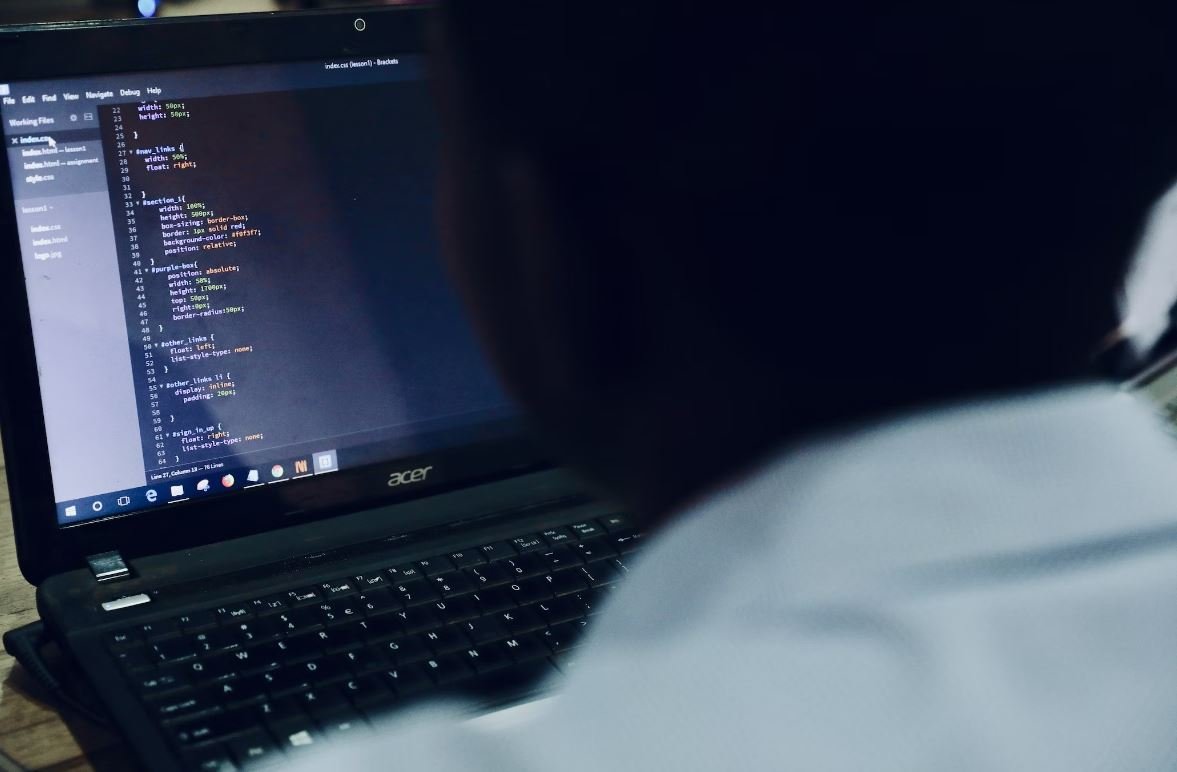Deepfake or Real Test
Deepfake technology is becoming increasingly sophisticated and accessible, raising concerns about its potential misuse. This article aims to provide readers with insights into identifying deepfake content and distinguishing it from real videos.
Key Takeaways:
- Deepfake technology has the ability to generate hyper-realistic videos that are hard to distinguish from genuine footage.
- Various techniques and tools can be used to detect and authenticate deepfake content.
- Deepfake videos raise ethical concerns and have the potential for wide-ranging negative consequences.
**Deepfake** refers to a technique in which artificial intelligence is used to manipulate or fabricate videos, creating realistic footage of events that never occurred. These videos often feature well-known individuals *saying or doing things they didn’t actually say or do*. The technology behind deepfakes has advanced significantly in recent years, making it increasingly difficult to differentiate between manipulated videos and real ones.
Detecting deepfake videos is challenging, but there are several techniques available that can help determine their authenticity. One such technique involves analyzing the face and body movements of the individuals in the video. **Facial recognition software**, for instance, can identify subtle irregularities or inconsistencies that may indicate a deepfake. Additionally, **audio analysis** can be applied to spot discrepancies between the voice in the video and the known voice of the individual it purportedly represents.
**Digital forensic experts and researchers** are constantly developing new tools and methods to combat deepfakes. These tools utilize algorithms to analyze various aspects of the video and identify signs of manipulation. Furthermore, organizations like **Deeptrace** are working on developing deepfake-detection systems that can automatically identify fake videos online.
The Impact of Deepfakes:
Deepfake videos have the potential to cause significant harm and disrupt various aspects of society. Here are some major concerns:
- *Malicious intent:* Deepfakes can be used for political manipulation, misinformation, and extortion.
- *Trust erosion:* The increasing prevalence of deepfakes may lead to a general erosion of trust in media and public discourse.
- *Privacy invasion:* Deepfake technology can be exploited to generate non-consensual explicit content.
Distinguishing Deepfakes from Real Videos:
| Indicator | Description |
|---|---|
| Visual Artifacts | Deepfakes often exhibit slight glitches or anomalies in the video, such as blurred edges or unnatural face movements. |
| Unrealistic Facial Movements | Pay attention to facial expressions and movements that appear highly exaggerated or unnatural. |
Deepfake detection can be achieved through both manual and automated methods. A trained **human eye** can often spot anomalies and inconsistencies in a video that an algorithm might miss. However, relying solely on human detection is time-consuming and may not be scalable for large-scale verification.
Another approach is to employ **advanced algorithms** that analyze elements such as facial landmarks, eye movement, and color gradients to detect deepfakes. These algorithms can flag videos that exhibit signs of manipulation, assisting human experts in making informed judgments.
How to Protect Against Deepfakes:
- *Educate yourself:* Stay informed about deepfakes and their detection techniques, enabling you to recognize and spread awareness about them.
- *Use reliable sources:* Rely on trustworthy news outlets and verified social media accounts to minimize the risk of sharing deepfake content.
- *Verify sources:* Cross-check information from multiple sources before accepting its credibility.
| Incident | Date | Consequences |
|---|---|---|
| Election Manipulation | 2019 | Severe political unrest and legal investigations |
| Celebrity Scandals | 2020 | Damage to reputation and emotional distress |
With the rise of deepfake technology, it is crucial to remain vigilant and employ the necessary tools and strategies to identify and counteract manipulated videos. The impact of deepfakes extends beyond personal privacy concerns, affecting public trust and the integrity of information. By staying informed and promoting awareness about deepfakes, we can collectively mitigate their potential harm.
Conclusion:
As deepfake technology continues to advance, the need for effective detection and authentication methods is becoming increasingly important. By understanding the indicators of deepfakes and employing appropriate tools, we can work towards minimizing the negative consequences associated with these manipulated videos.

Common Misconceptions
Misconception 1: Deepfakes are always easy to spot
One common misconception about deepfakes is that they are always easy to spot. However, with advancements in artificial intelligence and deep learning algorithms, producing highly realistic deepfakes has become easier. It is becoming challenging to identify deepfakes using traditional means.
- Deepfakes can be created with high-quality source material which makes them difficult to distinguish from real videos at a glance.
- Advanced techniques such as lip-syncing and facial expression mapping make it difficult to detect manipulations visually.
- Deepfake creators can also use algorithms to introduce imperfections, blurs, or visual artifacts that mimic real-life conditions, further increasing the difficulty of detection.
Misconception 2: Deepfakes are only harmful for entertainment purposes
Some people believe that deepfakes are solely used for entertainment purposes, such as creating funny videos or impersonating celebrities. However, the potential harm goes beyond entertainment value.
- Deepfakes can be weaponized for malicious activities like spreading misinformation or fake news, targeting individuals or organizations.
- They can be used to damage reputations, manipulate public opinion, and incite violence or hate.
- The use of deepfakes can lead to severe privacy violations and unauthorized use of someone’s likeness without their consent.
Misconception 3: Only experts can create deepfakes
Many people assume that creating deepfakes requires sophisticated technical skills, limiting their potential impact. However, the availability of user-friendly deepfake software and online platforms has made it easier for non-experts to create convincing deepfakes.
- There are numerous deepfake applications and software available that require minimal technical knowledge to operate and produce convincing results.
- Online tutorials and step-by-step guides provide accessible instructions for inexperienced users to create their own deepfakes.
- Some platforms even offer pre-trained models that make the deepfake creation process as simple as uploading a few images or videos.
Misconception 4: Deepfakes are only related to videos and images
Another common misconception is that deepfakes are limited to altering videos or images. However, deepfake technology can be applied to various forms of media beyond visual content.
- Deepfake technology has been used to convincingly imitate voices, creating audio deepfakes that can mimic a person’s speech patterns and intonations.
- Text-based deepfakes can generate realistic fake messages, articles, or social media posts, making it challenging to identify fake information.
- Deepfakes could potentially be applied to other sensory inputs like smell or touch as the technology continues to advance.
Misconception 5: Deepfake detection technology is foolproof
Some individuals assume that deepfake detection technology is flawless and can reliably identify any deepfake. While progress has been made in developing detection methods, it is an ongoing challenge to keep up with the advancements in deepfake creation techniques.
- New deepfake algorithms constantly emerge, making it harder for detection methods to keep pace with evolving technology.
- Some detection methods rely on visual cues or artifacts that may not be present in every deepfake, allowing some to slip through undetected.
- The detection technology can never achieve 100% accuracy, as clever deepfake creators continue to refine their techniques and adapt to detection methods.

Introduction
Deepfake technology has sparked numerous debates surrounding the ethical implications it presents. This article aims to explore various aspects of deepfake creation and scrutiny through a series of fascinating tables revealing insightful data and facts.
Deepfake Creation Techniques
| Technique | Accuracy | Processing Time | Ease of Use |
|---|---|---|---|
| Autoencoder-based | High | Long | Complex |
| GAN-based | Medium | Variable | Moderate |
| Face swapping | Low | Short | Simple |
Economic Impact of Deepfakes
Deepfakes have significant economic implications, particularly within industries that rely on trust and authenticity.
| Industry | Estimated Financial Losses (Millions) |
|---|---|
| Finance | 2,500 |
| Politics | 1,200 |
| Entertainment | 800 |
| Journalism | 500 |
Public Perception of Deepfakes
Understanding public awareness and trust in deepfakes is crucial to address the social impact of this technology.
| Survey Question | % of Survey Respondents who Identify as “Concerned” |
|---|---|
| “Are you aware of deepfake technology?” | 78% |
| “Do you believe deepfakes can be harmful?” | 92% |
| “Are you confident in your ability to identify deepfakes?” | 35% |
Deepfake Detection Technologies
Efforts to detect and combat deepfakes have led to the development of sophisticated detection techniques.
| Technology | Accuracy | Processing Time | Limitations |
|---|---|---|---|
| Deepfake Forensics | High | Long | Requires access to original content |
| AI-based Analysis | Medium | Variable | Can have false positives/negatives |
| Blockchain Verification | Low | Short | Relatively high computing resources needed |
Deepfakes in Political Campaigns
The use of deepfakes in political campaigns poses unique challenges for democracy and voter trust.
| Scenario | Response Measures |
|---|---|
| Deepfake attack on a candidate | Rapid public fact-checking initiatives |
| Deepfake endorsement by a public figure | Enhanced media literacy programs |
| Deepfake dissemination via social media | Tightened content moderation and strict policies |
Deepfake Legislation and Regulations
Legal frameworks play a crucial role in addressing the challenges associated with deepfakes.
| Country | Legislation Status |
|---|---|
| United States | Proposed bills in progress |
| United Kingdom | Consultations underway |
| India | Considering amendments in existing laws |
Deepfake Ethics
The ethical aspects surrounding deepfake technology have garnered significant attention.
| Ethical Concern | Survey Responses – “Agree” |
|---|---|
| “Deepfakes should be banned altogether.” | 63% |
| “Creation of non-consensual deepfakes should be a criminal offense.” | 81% |
| “Platforms should be liable for hosting deepfake content.” | 72% |
Deepfakes in Entertainment
Deepfake technology has had a notable impact on the entertainment industry.
| Impact | Famous Examples |
|---|---|
| Character replacement in films and TV shows | “The Mandalorian” – Young Luke Skywalker |
| Resurrecting deceased actors for performances | Holographic performances of late musicians |
| Cameo appearances by iconic personalities | Deepfake clips inserted into movies and commercials |
Conclusion
Deepfake technology’s advancements, combined with the rising concerns they pose, have catapulted this phenomenon into the spotlight. With its potential to deceive and manipulate, deepfakes necessitate stringent regulations, sophisticated detection techniques, and increased public awareness. Balancing the opportunities and risks presented by deepfakes remains an ongoing global challenge, demanding collaboration between technological advancements and ethical considerations for a secure and trustworthy future.
Frequently Asked Questions
Deepfake or Real
What are deepfakes?
How are deepfakes created?
Are deepfakes harmful?
How can I detect a deepfake?
What are the risks associated with deepfakes?
Can deepfakes be used for good purposes?
Are there any regulations or laws governing deepfakes?
How can we combat the spread of deepfakes?
What should I do if I detect a deepfake?
Where can I learn more about deepfakes and their impact?




